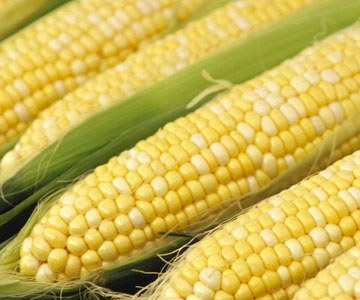China hands out more grain import quotas to increase purchases

China is allocating more low-tariff import quotas for corn this year and may expand its use of wheat quotas as it seeks to step up farm purchases from the United States and meet a pledge to comply with global trade rules, according to three sources.
China has a 95% self-sufficiency target for its rice, corn and wheat consumption, but allows a certain volume of imports through a tariff rate quota (TRQ) system.
The quotas allow importers to buy specified volumes with duties as low as 1%, compared with 65% without the quotas.
However the opaque system has been widely criticized by grain exporters who say Beijing does not issue the promised volume of quota, limiting purchases from overseas.
As part of a Phase 1 trade deal with the United States in January, China pledged to allow for the full use of its TRQs and it has issued more than 6 million tonnes of low-tariff corn quotas in 2020 so far, said two sources familiar with the matter.
The sources did not want to be identified due to the sensitivity of the matter.
That includes 1.5 million tonnes of quota issued in the last month, in addition to the batch issued at the start of the year when most quota is normally allocated.
Beijing may issue a total of 7.2 million tonnes of corn quotas, added one of the sources, briefed on the government plan, which would be the first time it has fully allocated its corn quota.
China's state planner, the National Development and Reform Commission, did not immediately respond to a fax seeking comment out of office hours.
PLEDGE TO USE MORE QUOTA
Beijing sets annual corn quotas at 7.2 million tonnes every year, wheat quotas at 9.64 million tonnes and rice at 5.32 million tonnes. The quotas do not specify any preferred origins.
With large portions of quota often going unused or being rolled into the following year, their allocation alone is not enough to predict China's grain import intentions.
However, after losing a World Trade Organization case brought by the United States on its grain quota system, China has also pledged to improve the way they are issued to ensure that more of the quota is used.
"China needs to buy more American farm goods. One way to do it is to expand use of import quota for grains like corn," said a manager with a state-owned firm.
So far, in the first quarter of 2020, China's corn imports totalled 1.25 million tonnes, up 27.3% on the same period a year ago, and came primarily from Ukraine, according to official data.
If quota were fully used, that would translate into $2.94 billion worth of wheat imports, and $1.52 billion of corn at current prices, according to Reuters calculations.
China's wheat quotas have also been issued "more widely" so far this year, said a source with a state-owned company, which has helped boost wheat imports by 23.1% to 1.27 million tonnes in the first quarter compared with the same period in 2019.
China used only a third of its wheat quotas last year. It stipulates that 90% of quota goes to state-owned trading companies, leaving very little for the large number of privately owned millers.
But last year Beijing said non-state companies could apply for the state quota portion using a state-owned trader as an agent. It also said all quota should be fully used "based on market conditions".
Reuters could not determine to what extent those changes are being implemented. But the source said wheat imports may hit as much as 7 million tonnes this year.
"The government might release more quota, or urge buyers to use more of the quota," he said, adding that the grain could come from both the United States and other origins.
Read also
The 21st International Conference BLACK SEA GRAIN.KYIV took place in Kyiv on April...
Europe’s fruit farmers worry as unseasonal frosts threaten harvests
Ukraine has 4 million tons of sunseed left by the end of the processing season
The Paris Olympics menu: more French, more local, less meat
Explanatory meetings between the European Commission and Ukraine on agriculture ha...
Write to us
Our manager will contact you soon












